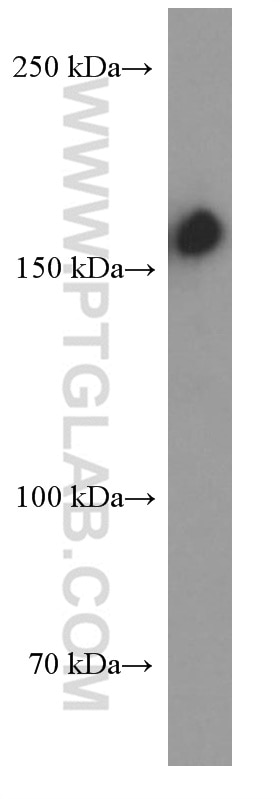CD109 Monoklonaler Antikörper
CD109 Monoklonal Antikörper für WB, Indirect ELISA
Wirt / Isotyp
Maus / IgG1
Getestete Reaktivität
human
Anwendung
WB, Indirect ELISA
Konjugation
Unkonjugiert
CloneNo.
2H8G7
Kat-Nr. : 60179-1-PBS
Synonyme
Geprüfte Anwendungen
Produktinformation
60179-1-PBS bindet in WB, Indirect ELISA CD109 und zeigt Reaktivität mit human
| Getestete Reaktivität | human |
| Wirt / Isotyp | Maus / IgG1 |
| Klonalität | Monoklonal |
| Typ | Antikörper |
| Immunogen | Peptid |
| Vollständiger Name | CD109 molecule |
| Berechnetes Molekulargewicht | 162 kDa |
| Beobachtetes Molekulargewicht | 162 kDa |
| GenBank-Zugangsnummer | BC152996 |
| Gene symbol | CD109 |
| Gene ID (NCBI) | 135228 |
| Konjugation | Unkonjugiert |
| Form | Liquid |
| Reinigungsmethode | Protein-A-Reinigung |
| Lagerungspuffer | PBS only |
| Lagerungsbedingungen | Store at -80°C. 20ul Größen enthalten 0,1% BSA. |
Hintergrundinformationen
CD109, also named as CPAMD7, is a member of the alpha2-macroglobulin/complement superfamily. It is a glycosylphosphatidylinositol (GPI)-linked cell surface glycoprotein of approximately 170kd which is found on the cell surface of platelets, activated T-cells, and endothelial cells. CD109 binds to and negatively regulates signaling of transforming growth factor beta (TGF-beta). CD109 has been identified as part of the TGF-beta receptor system in human keratinocytes. Up regulation of CD109 expression has been observed in several different types of tumor.CD109 is a glycosyl-phosphatidylinositol-anchored glycoprotein that is a member of the a2-macroglobulin/C3, C4, C5 family of thioester-containing proteins. There're 2 forms of 150 (p150) and 120 kDa (p120) exist due to proteolytic degradation from a 180 kDa form. The antibody can recognize all these 4 isoforms.



